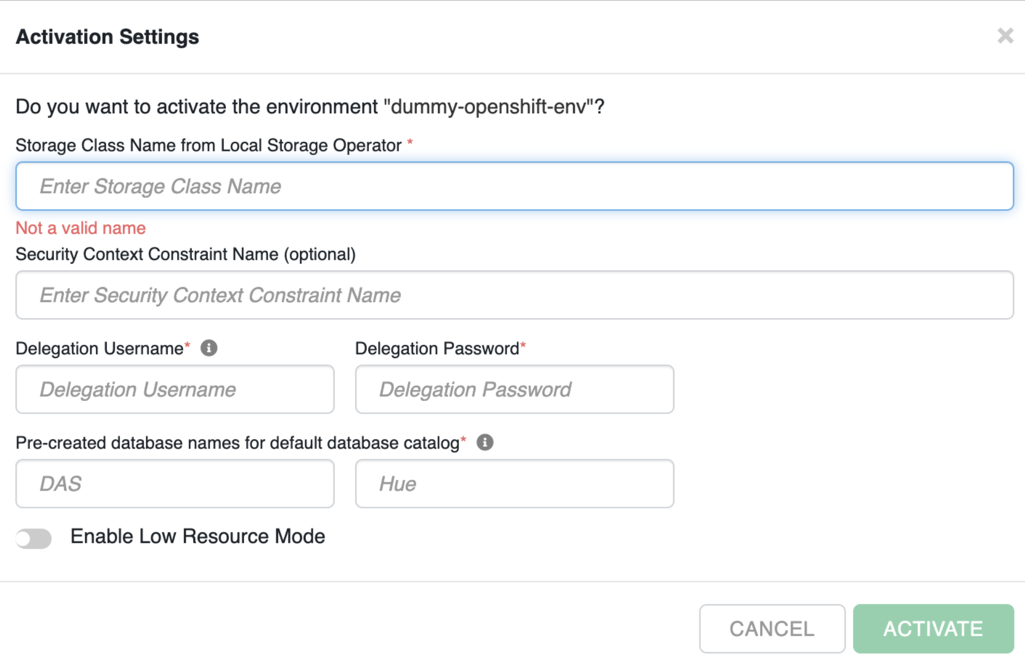Activating OpenShift and Embedded Container Service environments
This topic describes how to activate an environment to use for Cloudera Data Warehouse (CDW) Private Cloud.
Before you can create a Database Catalog to use with a Virtual Warehouse, you must activate a CDP environment. Activating an environment causes CDP to connect to the Kubernetes cluster, which provides the computing resources for the Database Catalog. In addition, activating an environment enables the Cloudera Data Warehouse (CDW) service to use the existing data lake that was set up for the environment, including all data, metadata, and security.
- Determine which environment that uses a particular data lake is the environment you want to activate for use with a Database Catalog and Virtual Warehouse.
- For local caching, ensure that an administrator uses the Local Storage Operator to
create a local file system on an SSD/NVMe for each OpenShift worker node and then mounts
it to a known location on the worker node. Make sure that this local caching location
allows temporary data to be stored in a way that supports performance. You need to specify
the Storage Class Name from the Local Storage Operator when you activate the environment
for the CDW service in Step 4 below. For more information about creating a local file
system on OpenShift worker nodes using the Local Storage Operator, see Persistent storage using local volumes in the
OpenShift documentation.
In Embedded Container Service (ECS) environments, the Storage Class Name is automatically obtained from Cloudera Manager.

